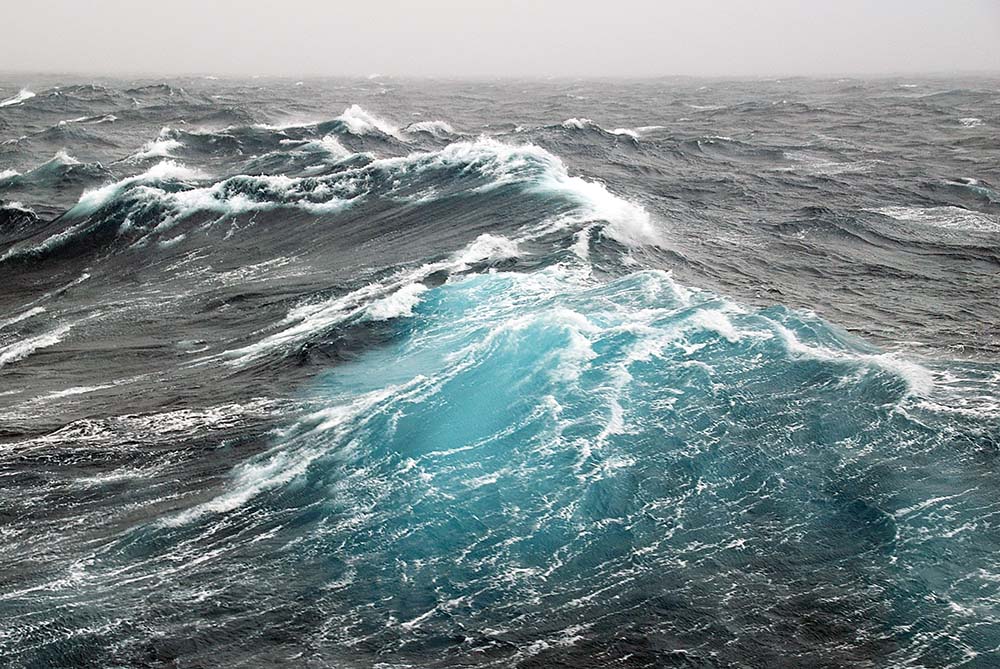ACE Project R1.1
The Southern Ocean in a Changing Climate
The ACE CRC’s Project R1.1 team is working to quantify how and why the Southern Ocean is changing, including the human contribution to these changes.
The Southern Ocean has a powerful influence on Earth’s climate.
This massive body of water stores more anthropogenic heat and carbon dioxide than any other latitude band on Earth. The Antarctic Circumpolar Current, the world’s largest ocean current, merges the waters of the Atlantic, Indian, and Pacific Oceans and carries up to 150 times the volume of the world’s rivers combined.
The annual advance and retreat of Antarctic sea ice in the Southern Ocean also has far-reaching impacts for our climmate. As sea ice forms every year across an area around three times the size of Australia, it generates a powerful current of cold, dense and salty water. This Antarctic Bottom Water circulates throughout the world’s oceans and plays a key role in regulating global atmospheric temperatures.
The Southern Ocean is also changing rapidly. Observations over several decades indicate that the water is warming, freshening, decreasing in oxygen and acidifying. The system is also producing about half the amount of Antarctic Bottom Water than it was in 1970.
The ability of the Southern Ocean to continue to provide ‘services’ that slow the rate of climate change is unknown. Equally uncertain are the potential climate effects if the rate of carbon and heat absorption in the Southern Ocean begin to slow.
Using a variety of observational tools, the Southern Ocean in a Changing Climate project is delivering knowledge of physical changes in the ocean needed to assess the consequences of Southern Ocean change on the cryosphere, biosphere, carbon cycle and climate.
The project team brings together decades of experience in oceanography and climate science, and includes several lead authors for United Nations Intergovernmental Panel on Climate Change (IPCC) updates.
Technical Details (Click to Expand)
Despite the importance of the Southern Ocean to the world’s climate system, many aspects of its physical processes remain unknown. Melt of glacial ice by a warming ocean is more important than recognised previously, but the future response of the Antarctic ice sheet to ocean warming is not known. Research shows that heat and carbon uptake is localised in subduction “hot spots” which may be sensitive to climate change. Many of the changes observed in the Southern Ocean are likely caused by human drivers (e.g. ozone, greenhouse), but few quantitative attribution studies have been carried out.
The project targets priorities identified in national and international research strategies and assessments, including the AAS Strategic Plan, Framework for Climate Change Science, World Climate Research Program, and the IPCC 5thAssessment Report. These documents highlight the need for expanded observations of the Southern Ocean.
Research activities will include broad-scale sampling of ocean heat and freshwater content using Argo floats sampling of the ocean beneath the sea ice using ice-capable floats and moorings; full-depth sampling of changes in physical, biological and biogeochemical properties along the SR3 transect; assessment of changes in ventilation and the strength of the overturning circulation using multiple tracers; identify and quantify physical controls on changes in habitat and changes in ocean carbon uptake; quantitative attribution and detection studies using observations and output from CMIP5 models; and an assessment of the sensitivity of the Southern Ocean circulation to changes in forcing, including the role of local dynamics (e.g. eddy fluxes and topographic interactions). The project will explore the role of atmospheric processes in ocean changes, particularly through the use of more sophisticated ozone forcing and improved cloud parameterisations to explore surface radiative balance, wind stress and precipitation changes.
The outcomes of Project R1.1 will include a more effective national response to climate change, guided by climate projections that include a more faithful representation of Southern Ocean processes. The observations of ocean heat content and the earth’s energy balance will provide valuable constraints in climate sensitivity, one of the most controversial and policy-relevant aspects of AR5.
Project Partners (Click to Expand)
• Alfred Wegener Institute, AWI (Germany)
• ARC Centre of Excellence for Climate System Science (CoECSS), Australia
• Australian Antarctic Division
• Bureau of Meteorology
• CSIRO, Australia
• First Institute of Oceanography (China)
• Institute for Marine and Antarctic Studies, University of Tasmania (IMAS)
• Institute of Low Temperature Science (ILTS), Japan
• Integrated Marine Observing System (IMOS), Australia
• Intergovernmental Panel on Climate Change (IPCC)
• Laboratoire d’Etudes en Géophysique et Océanographie Spatiale, (LEGOS), France
• National Institute for Water and Atmospheric Research (NIWA), New Zealand
• National Institute of Polar Research (NIPR), Japan
• National Oceanic and Atmospheric Administration (NO AA), USA
• Scripps Institution of Oceanography, USA
• Texas A&M University (USA)
• Woods Hole Oceanographic Institution (WHOI), USA
• World Climate Research Program (WCRP)
Project Team
Links
Warming seas undermining giant glacier, Sydney Morning Herald, 17 March 2015.
Climate heat on Southern Ocean, Bronwyn Herbert, ABC PM, 29 November 2011.
Oceanographer wins international prize, ACE CRC media release, 21 May 2012.
SELECTED PUBLICATIONS
Rintoul, S. R., S. Sokolov, M.J.M. Williams, B. Peña Molino, M. Rosenberg and N.L. Bindoff, 2014. Antarctic Circumpolar Current transport and barotropic transition at Macquarie Ridge. Geophysical Research Letters, 41, 7254-7261, doi:10.1002/2014GL061880
Van Wijk, E. M. and S. R. Rintoul, 2014. Freshening drives contraction of Antarctic Bottom Water in the Australian Antarctic Basin. Geophysical Research Letters, 41, doi:10.1002/2013GL058921
IPCC, 2013. Climate Change 2013: The Physical Science Basis. Contribution of Working Group I to the Fifth Assessment Report of the Intergovernmental Panel on Climate Change [Stocker, T. F., D. Qin, G.-K. Plattner, M. Tignor, S. K. Allen, J. Boschung, A. Nauels, Y.-Xia, V. Bex and P. M. Midgley (eds.]. Cambridge University Press, Cambridge, United Kingdom and New York, NY, USA, 1535 pp. [Chapters 3 and 10 led by ACE CRC scientists.]
Sallée, J. B., R. Matear, S. R. Rintoul and A. Lenton, 2012. Localized subduction of anthropogenic carbon dioxide in the Southern Hemisphere oceans. Nature Geoscience, 5,579-584, doi:10.1038/ngeo1523
Böning, C. W., A. Dispert, M. Visbeck, S. R. Rintoul, and F. Schwarzkopf, 2008. The response of the Antarctic Circumpolar Current to recent climate change. Nature Geoscience, 1, 864-869, doi:10.1038/ngeo362



























